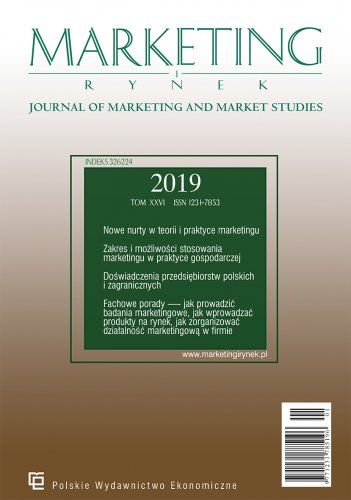Korzyści i bariery zarządzania wiedzą w projektach wytwarzania oprogramowania
Celem opracowania jest wskazanie podstawowych barier i korzyści płynących z zarządzania wiedzą w podgrupie projektów wytwarzania oprogramowania. W pierwszej części artykułu omówiona specyfikę projektów wytwarzania oprogramowania. Następnie został przedstawiony proces badań empirycznych oraz prezentacja uzyskanych wyników. Badania mają charakter pilotażowy i stanowią podstawy do kontynuacji badań nad podjętą problematyką badawczą.
Bibliografia
Burnell, L.J., Priest, J.W. i Durrett, J.B. (2002). Teaching distributed multidisciplinary software development. IEEE software, 19(5), 86–93. https://doi.org/10.1109/ms.2002.1032859
Conroy, G. i Soltan, H. (1998). ConSERV, as a continual audit concept to provide traceability and accountability over the project life cycle. International Journal of Project Management, 16(3), 185–197. https://doi.org/10.1016/s0263-7863(97)00038-0
Damm, D. i Schindler, M. (2002). Security issues of a knowledge medium for distributed project work. International Journal of Project Management, 20(1), 37–47. https://doi.org/10.1016/s0263-7863(00)00033-8
Despa, M.L. (2014). Comparative study on software development methodologies. Database Systems Journal, 5(3), 37–56.
Engwall, M. (2003). No project is an island: Linking projects to history and context. Research policy, 32(5), 789–808. https://doi.org/10.1016/s0048-7333(02)00088-4
Fazlagić, J. (2014). Innowacyjne zarządzanie wiedzą. Warszawa: Difin.
Gopalkrishna, B., Rodrigues, L.L., Poornima, P.K. i Manchanda, S. (2012). Knowledge Management in Software Companies – An Appraisal. International Journal of Innovation, Management and Technology, 3(5).
Hanisch, B., Lindner, F., Mueller, A. i Wald, A. (2009). Knowledge management in project environments. Journal of Knowledge Management, 13(4), 148–160. https://doi.org/10.1108/13673270910971897
Ismail, W.K.W., Nor, K.M. i Marjani, T. (2009). The role of knowledge sharing practice in enhancing project success. Institute of Interdisciplinary Business Research, 1(7), 34–52.
ISO (2008). ISO/IEC 12207:2008 Systems and software engineering – Software life cycle processes. Genewa: ISO. https://doi.org/10.3403/30236650u
Jaszkiewicz, A. (1997). Inżynieria Oprogramowanie. Gliwice: Helion.
Johansson, S., Löfström, M. i Ohlsson, Ö. (2007). Separation or integration? A dilemma when organizing development projects. International Journal of Project Management, 25(5), 457–464. https://doi.org/10.1016/j.ijproman.2006.11.006
Kan, S.H. (2002). Metrics and models in software quality engineering. Boston: Addison-Wesley Longman Publishing.
Kerzner, H. (2003). Advanced project management: Best practices on implementation. Hoboken: John Wiley & Sons.
Kraszewska, M. i Pujer, K. (2017). Konkurencyjność przedsiębiorstw. Sposoby budowania przewagi konkurencyjnej. Wrocław: Exante.
Mbhalati, O.J. (2012). The Genesis Of The Knowledge-Based View. Journal of Knowledge Management Practice, 13(2).
Miller, C.R. (1998). Learning from history: World War II and the culture of high technology. Journal of Business and Technical Communication, 12(3), 288–315. https://doi.org/10.1177/1050651998012003002
Mishra, A.i Dubey, D. (2013). A comparative study of different software development life cycle models in different scenarios. International Journal, 1(5), 64–69.
Mockus, A. i Herbsleb, J. (2001). Challenges of global software development. Referat na konferencji: Seventh international software metrics symposium. London. https://doi.org/10.1109/metric.2001.915526
PARP. (2017). Perspektywy rozwoju polskiej branży ICT do roku 2025. Warszawa: Ministerstwo Rozwoju.
PMI. (2008). A Guide to the Project Management Body of Knowledge (PMBOK Guide). Campus Boulevard: Project Management Institute. https://doi.org/10.1109/ieeestd.2011.6086685
Pollack, J. (2007). The changing paradigms of project management. International Journal of Project Management, 25(3), 266–274. https://doi.org/10.1016/j.ijproman.2006.08.002
Reich, B.H. (2007). Managing knowledge and learning in IT projects: A conceptual framework and guidelines for practice. Project Management Journal, 38(2), 5–17. https://doi.org/10.1177/875697280703800202
Ronkainen, J. i Abrahamsson, P. (2003). Software development under stringent hardware constraints: Do agile methods have a chance? Referat na konferencji: International Conference on Extreme Programming and Agile Processes in Software Engineering. Berlin. https://doi.org/10.1007/3-540-44870-5_10
Rubin, K.S. (2012). Essential Scrum: A practical guide to the most popular Agile process. Boston: Addison-Wesley Longman Publishing.
Schindler, M. i Eppler, M.J. (2003). Harvesting project knowledge: a review of project learning methods and success factors. International Journal of Project Management, 21(3), 219–228. https://doi.org/10.1016/s0263-7863(02)00096-0
Sener, Z. i Karsak, E.E. (2012). A decision model for setting target levels in software quality function deployment to respond to rapidly changing customer needs. Concurrent Engineering, 20(1), 19–29. https://doi.org/10.1177/1063293x11435344
Spałek, S. (2013). Dzielenie się wiedzą projektową w polskich przedsiębiorstwach – zarys problematyki. Zarządzanie i Finanse, 11(1, cz. 2), 305–314.
Świętoniowska, J. (2015). Podejście kontekstowe w zarządzaniu projektami. Studia Ekonomiczne, 216, 118–134.
Terzieva, M. (2014). Project Knowledge Management: How organizations learn from experience. Procedia Technology, 16, 1086–1095. https://doi.org/10.1016/j.protcy.2014.10.123
Trocki, M. (red). (2011). Zarządzanie wiedzą w projektach. Warszawa: SGH.
UMWZ. (2011), Analiza sytuacji rynkowej dla działalności gospodarczej na obszarze województwa zachodniopomorskiego dla branży informatycznej. Gdańsk: Urząd Marszałkowski Województwa Zachodniopomorskiego. https://doi.org/10.18276/er.2015.24-13
Zhao, D. i Zuo, M. (2011). Knowledge transferred across projects and its characteristics in an IT service enterprise. Referat na konferencji: 2011 International Conference of Information Technology, Computer Engineering and Management Sciences. Nanjing, Jiangsu, China. https://doi.org/10.1109/icm.2011.139

